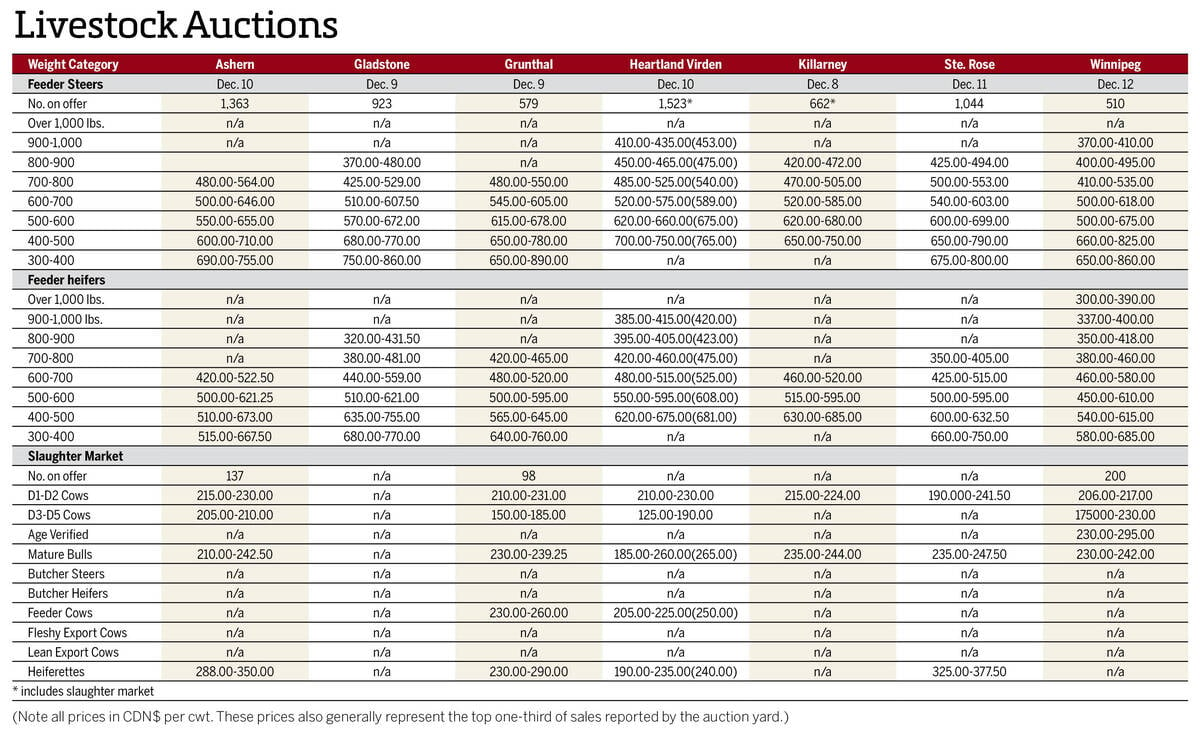ICE Futures Canada canola contracts saw some choppy activity over the course of the week ended March 16, but trended higher overall with much of the relative strength coming from weakness in the Canadian dollar.
The currency fell by about 1.5 cents relative to its U.S. counterpart over the course of the week, which helped keep crush margins steady despite a $10 rise in the futures. The currency ended the week trading just above 76 U.S. cents, well below the 80-cent mark at which it was trading back in mid-February.
Read Also

Manitoba cattle prices Dec. 16
Here’s what local farmers were getting paid last week for their cattle at Manitoba livestock auction marts; prices covering the week Dec. 8-12, 2025.
The weaker currency should also encourage export demand, although canola exports are starting to lag the year-ago pace with transportation issues across the Prairies leading to a backlog at the West Coast. Canada has exported 6.4 million tonnes of canola during the crop year to date, according to the latest Canadian Grain Commission data. That compares with 6.6 million tonnes at the same point the previous year.
Global trade uncertainty received a fair bit of play in the agricultural markets during the week, and should be something to watch going forward. U.S. President Donald Trump is a known wild card, with his recent threats of tariffs on steel and aluminum raising concerns over China placing retaliatory tariffs on soybeans and corn. NAFTA negotiations are ongoing as well, and Canada is very much caught up in the reality show going on south of the border.
As far as the actual market fundamentals are concerned, the dire drought situation in Argentina is still not old news. Its soybean and corn production estimates continue to be revised lower, opening the door for U.S. soybean and corn exports, keeping the futures well supported.
More recently, Argentina finally saw some moisture, but while its crop prospects are unlikely to improve, the rain should at least stabilize the crops and both soybean and corn futures were down sharply the morning of March 19.
Dryness in the U.S. Plains kept wheat futures somewhat supported during the week, although there was enough moisture in the forecast to see values drift lower. Improving production prospects out of Russia and Ukraine were also weighing on wheat.
Rain also hit the Plains over the weekend (March 17-18) and wheat futures were down sharply on March 19. Winter wheat is only just starting to come out of dormancy in the southern U.S. Plains, and there’s a long season ahead for wheat crops to be made and lost a few times over.
















